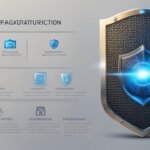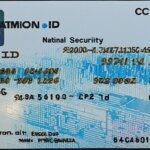Table of Contents
Multi-factor authentication (MFA) is a security measure that enhances security by requiring users to provide multiple forms of identification to access their accounts or systems. It goes beyond just a username and password, adding an extra layer of protection. By implementing MFA, businesses can carry out online interactions and transactions securely, safeguarding organizational and user data.
MFA not only enhances security but also improves security response. It alerts companies and individuals of suspicious login attempts, enabling faster response to potential cyberattacks. With the increasing prevalence of digital threats, multi-factor authentication has become a necessity in ensuring the safety of sensitive information.
Implementing MFA involves using multiple verification methods, such as passwords, biometrics, one-time passcodes, security tokens, or device recognition. By combining these methods, multi-factor authentication strengthens the overall security posture, reducing the risk of unauthorized access.
How Does Multi-Factor Authentication Work?
Multi-factor authentication (MFA) adds an extra layer of security by requiring users to provide multiple forms of identification during the account registration process. This information is stored and used for subsequent login attempts, ensuring the user’s identity is verified. The MFA process typically involves three steps: registration, authentication, and reaction.
During registration, users create an account with a unique username and password, and they also link additional items, such as a cell phone device or physical hardware fob, to their account. These linked items serve as the additional authentication factors in the MFA process.
Authentication occurs when users log in and provide their username and password, which serve as the first factor of authentication. They also need to provide an additional authentication response from their MFA device, which serves as the second factor of authentication. This two-factor authentication ensures that only authorized users can access their accounts.
Upon successful authentication, users may need to complete the authentication process by verifying the other linked items to their account, such as confirming a code sent to their phone or validating a unique hardware fob. This final step adds an extra layer of security, ensuring that the user is in possession of the necessary authentication factors.
Implementing multi-factor authentication can take various forms, such as:
- Two-factor authentication: This requires users to provide a password and one additional identification factor.
- Third-party authenticator applications: Users can employ dedicated apps on their devices, generating unique codes for authentication.
- Biometric information: This involves using fingerprint or facial recognition technology for authentication.
- Device recognition: Systems can authenticate users based on their trusted devices, such as smartphones or laptops.
Additionally, adaptive multi-factor authentication takes into account contextual user information, such as location, device, and time, to dynamically adjust the authentication factors required. This adaptive approach enhances security while providing a seamless user experience.
Benefits and Examples of Multi-Factor Authentication
The benefits of multi-factor authentication (MFA) are numerous. Firstly, MFA enhances security by requiring users to provide multiple forms of identification, reducing the risk of unauthorized access. Traditional username/password authentication is vulnerable to brute force attacks and stolen passwords, but MFA adds an extra layer of protection that mitigates these weaknesses.
In addition to enhanced security, MFA also increases confidence in organizational data protection. By implementing multi-factor authentication, companies demonstrate a proactive approach to safeguarding sensitive information, instilling trust among their users.
Now, let’s explore some examples of how multi-factor authentication can be applied. For remote access to employees, companies may require the use of multiple factors such as login credentials, hardware fobs, and biometric scans. This multi-layered approach ensures secure resource access, even when employees are working outside the company premises.
Another example of multi-factor authentication is system access for on-site employees. In this scenario, proximity badges are used to provide quick and secure access to applications and data within the workplace. These badges serve as an additional authentication factor, ensuring that only authorized personnel can interact with sensitive resources.
These examples illustrate the flexibility of multi-factor authentication, showcasing how it can be customized to fit various security requirements and use cases. With its benefits in enhancing security and reducing unauthorized access risk, multi-factor authentication is a valuable tool in the modern digital landscape.
FAQ
What is multi-factor authentication?
Multi-factor authentication (MFA) is a security measure that requires users to provide multiple forms of identification to access their accounts or systems. It adds an extra layer of protection beyond just a username and password.
How does multi-factor authentication work?
Multi-factor authentication works by requesting multiple forms of identification from the user during the account registration process. This information is stored and used to verify the user during subsequent login attempts. The process typically involves three steps: registration, authentication, and reaction.
What are the benefits of multi-factor authentication?
The benefits of multi-factor authentication include enhanced security, reduced risk of unauthorized access, and increased confidence in organizational data protection. It protects against brute force attacks, stolen passwords, and unauthorized access attempts.
Can you provide examples of multi-factor authentication use cases?
Examples of multi-factor authentication use cases include remote access to employees, where companies require employees to use multiple factors such as login, hardware fobs, and biometric scans for secure resource access. Another example is system access for on-site employees only, where proximity badges are used for quick and secure access to applications and data within the workplace.













